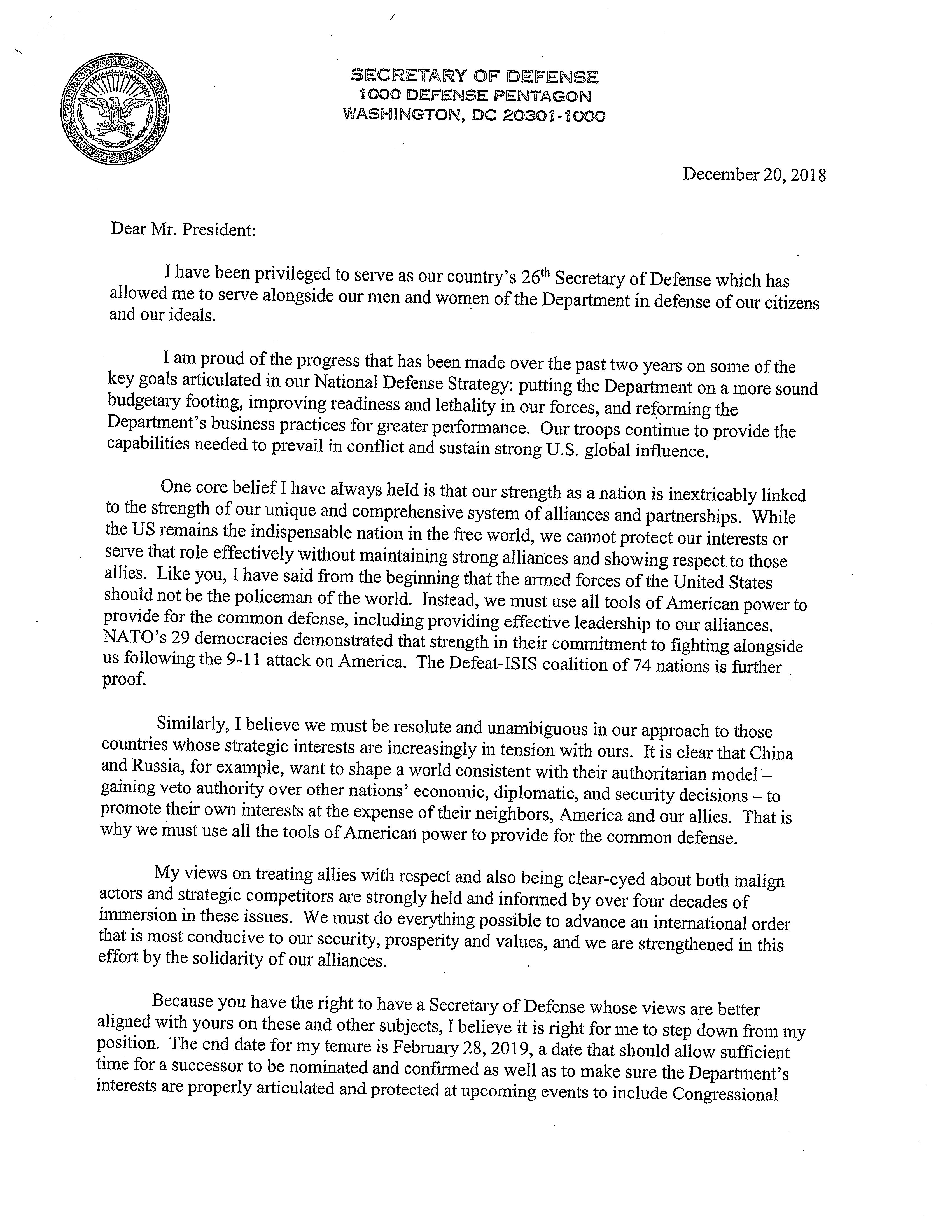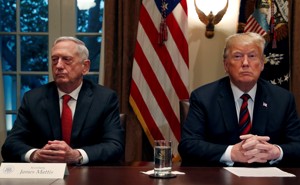
Mexico’s Strategy for Dealing With Trump: Warn Him About China
By AZAM AHMED and ELISABETH MALKIN
2 hrs ago

 .
.
MEXICO CITY — Mexico’s new government has a strategy for dealing with President Trump.
Don’t anger him. Don’t cave in to him. Try to get him to help fund an ambitious investment plan to stem migration by creating jobs in Central America.
And if Mr. Trump cannot be persuaded, Mexican officials said in interviews that they would remind him that there is another player in the region willing to step into the vacuum: China.
That, in a nut shell, is the approach the Mexican government is betting can defuse the standoff over the thousands of migrants amassed at its border with the United States, hoping to make it across.
Mexico’s plan to try to raise money to develop Central America and southern Mexico was announced last week, when Andrés Manuel López Obrador, the country’s new president, introduced what he called a “Marshall Plan” to address the root causes of Central American migration: a $30 billion initiative to invest in the region and welcome migrants into Mexico with visas, health care and employment.
Mexican officials have compared the proposal to the plan to rebuild postwar Europe. This approach would represent a break with Mr. López Obrador’s predecessor, who considered giving in to Mr. Trump’s demands and allowing people seeking asylum in the United States to remain in Mexico while they wait.
And Mexico’s new plan is, in many respects, the opposite of Mr. Trump’s vow to crack down on migration, which includes building a wall, deploying the military and cutting aid to Central America.
In speaking about the contours of their new policy, Mexican officials told The New York Times that they would not force a confrontation with Mr. Trump by demanding that he accept the migrants onto American soil; that would only anger the American president, and he would not do it anyway, they said.
But at the same time, they said they were not going to strike a deal with the United States to keep asylum seekers on the Mexican side of the border. That would allow Mr. Trump to claim a victory Mexican officials are not willing to give him. The officials spoke on the condition of anonymity because they did not want to aggravate already strained relationships with the Trump administration.
Instead, they want to change the focus of the conversation to expanding the economy of Central America and the south of their country by marshaling public and private investment to build infrastructure, develop the energy sector and create jobs in the region so people do not have to stream north in the first place.
They acknowledge that it may be difficult to convince the Trump administration to invest large sums in the region, a proposal they have only recently broached with American officials.
Buy they are hoping the perceived threat of China’s growing presence in the region can be used as leverage to bring the United States on board.
While it is unclear how much more China would be willing to invest in the region, in recent years it has increased its presence throughout Latin America, financing infrastructure projects, tightening ties with governments and even convincing a handful of Central American nations to switch their diplomatic recognition of Taiwan to China — a sticking point with the Americans.
The Mexican strategy to rely on the United States’ concerns about China’s expanding influence in the region reflects a growing sense in Mexico that it can no longer take cooperation with the United States for granted.
Both the White House and State Department declined to comment on the Mexican proposal.
“For a long time there has been this competition within Latin America for influence, where China is willing to invest billions in infrastructure and energy that the United States simply isn’t,” said Duncan Wood, the director of the Mexico Institute at the Wilson Center.
The proposal is also a reflection of the distinct personalities of Mr. López Obrador and Mr. Trump: Both are mavericks — albeit on opposite sides of the political spectrum — and both are willing to break with long-established conventions.
“Partly because of Trump and partly because of Andrés Manuel, there is an opening there,” Mr. Wood said.
Unlike his predecessor, Mr. López Obrador is willing to chart an independent course in his response to the Trump administration — partly because of Mr. Trump’s hard line on migration and partly out of a conviction that the only way to tackle the matter is to go after its root causes.
And to do that, Mexico will look for help wherever it can find it, including China, which has already expressed an interest in Mr. López Obrador’s plan to lay hundreds of miles of track for a tourist train in the Yucatán Peninsula — a project widely opposed by environmental advocates.
Of course, that does not mean Mexico will make a sharp turn to China, given its longstanding relationship with the United States. Nor does floating the idea that China may participate make Mexico’s costly proposal any more plausible.
“The money is just not there,” said Mark Feierstein, the former senior director for Western Hemisphere affairs at the National Security Council during the Obama administration. He noted that the United States was spending more than $650 million a year in Central America’s Northern Triangle, which is composed of Guatemala, Honduras and El Salvador.
But that may be beside the point.
“If nothing else, it is a good bargaining chip,” said Doris Meissner, a senior fellow at the Migration Policy Institute in Washington, of the idea that China could increase its investment in the region. “Both sides are laying down their frameworks and their points of view as to how they should proceed.”
The idea that China could increase its influence in Mexico emerged even before Mr. López Obrador came into office.
“I heard from senior Mexican officials during the transition that if the United States is not going to treat Mexico with respect, don’t be surprised if you see a Chinese submarine in a Mexican port,” said Juan Gonzalez, who was an adviser to Vice President Joseph R. Biden on Central America.
“I think it was hyperbolic,” he said of the outgoing officials’ warning, before adding, “I think Mexico sees increased political risk coming from the political process in the United States and they are diversifying their interests.”
Since taking office on Dec. 1, Mr. López Obrador has done nothing if not shake up the establishment.
He has announced the cancellation of the construction of a new airport, a multibillion-dollar project that was well underway, and temporarily suspended new auctions for oil exploration in Mexico. He has also cut salaries for government employees and proposed a measure to dismantle a much-vaunted education overhaul.
As he did on the campaign trail, Mr. López Obrador has focused on domestic issues — an inward-looking vision that differs from recent Mexican presidents who saw the global stage as the nation’s future.
But the migrant crisis forced its way to the top of the agenda, proving a frustrating first test for Mr. López Obrador.
The arrival of thousands of migrants traveling in caravans from Honduras and other Central American countries raised the profile of an existing problem, increasing the stakes and forcing Mr. López Obrador to decide how to manage it just days after taking office.
For decades, Mexico kept its head down as hundreds of thousands of migrants — many of them Mexican — made their way into the United States. But in recent years, the nation’s status as a transit country has changed.
Mexico is becoming a destination, not just a portal to the United States. Every year, more people apply for asylum in Mexico, and many more choose to stay and seek work. A bottleneck in the United States has meant that thousands of migrants are stuck waiting months at the border for their initial asylum interview with the American authorities.
In 2014, at the urging of the Obama administration, Mexico adopted a tough policing strategy along its southern border with Guatemala that essentially amounted to detention and deportation. But that also failed to curtail the flow of migrants.
Today, with about 10,000 migrants having entered Mexico in caravans that focused global media attention on their plight, mass roundups and deportations are not an option, officials say. Nor is striking a deal with the Trump administration to host the migrants indefinitely.
So Mr. López Obrador’s government is trying to fold them into Mexican society — and raise money to invest in projects that would boost employment and prosperity in the region.
“It’s not enough just to point out that the causes of migration have to be dealt with,” said Marcelo Ebrard, Mexico’s foreign secretary, adding that Mexico wants to counter the idea “that the best way to confront migration is through exclusion and control.”
This is, in part, a recognition that Mexico forms a part of a busy migration corridor and that, with or without help from the United States, it has to deal with the issue.
“Finally, the issue of the Northern Triangle and migration is seen as a regional issue,” said Rafael Fernández de Castro, the director of the Center for U.S.-Mexican Studies at the University of California, San Diego, and a former Mexican presidential adviser. “There is a window of opportunity. The knowledge and awareness have never been as clear as they are now.”
Mr. López Obrador is also signaling an interest in playing a broader leadership role in the region, as Mexico did during the 1970s and 1980s.
“Mexico wants to take back leadership in the region,” said Rodolfo Cruz Piñeiro, director of the department for population studies at the College of the Northern Border in Tijuana. “Mexico is telling the U.S.: ‘I can control this region for you, but I need your economic help.’”
“What will the U.S. ask?’’ he added. “That’s the great unknown.”
Above is from: https://www.msn.com/en-us/news/world/mexico’s-strategy-for-dealing-with-trump-warn-him-about-china/ar-BBR5mtZ?ocid=spartandhp
















 .
. 






 © Jonathan Ernst / Reuters
© Jonathan Ernst / Reuters © Tony Gutierrez / AP
© Tony Gutierrez / AP
 © Carolyn Van Houten/The Washington Post Troops take part in a July 4 naturalization ceremony in Phoenix. Stricter security screenings have caused a backlog of recruits. The Pentagon will begin sending a backlog of thousands of green-card holders to recruit training, suspending a policy adopted by the Trump administration last year that required more-stringent background checks for some immigrants wanting to serve, according to two defense officials and an internal memo.
© Carolyn Van Houten/The Washington Post Troops take part in a July 4 naturalization ceremony in Phoenix. Stricter security screenings have caused a backlog of recruits. The Pentagon will begin sending a backlog of thousands of green-card holders to recruit training, suspending a policy adopted by the Trump administration last year that required more-stringent background checks for some immigrants wanting to serve, according to two defense officials and an internal memo.

